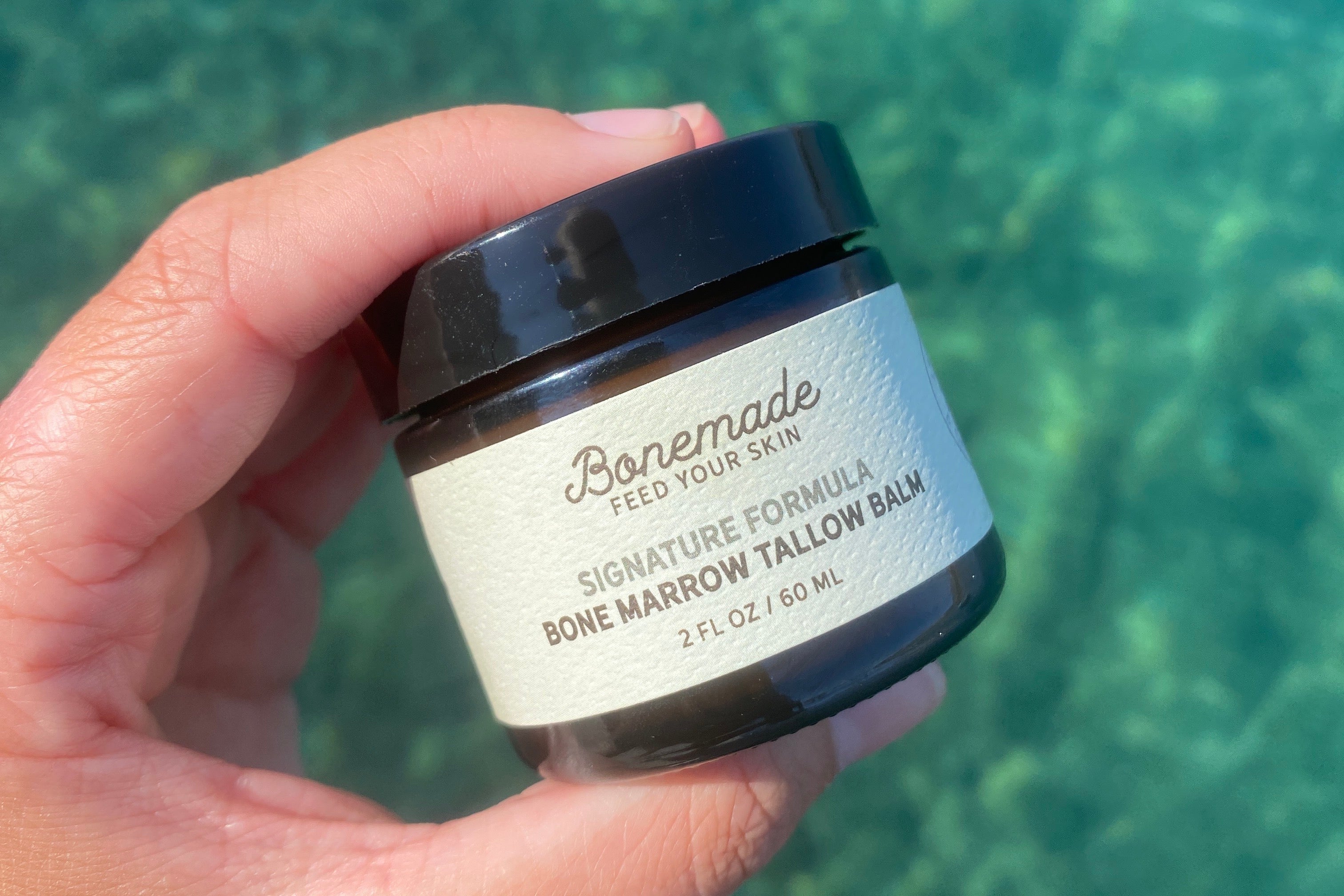Why Grass Fed Beef Tallow Matters
As green beauty and organic alternatives rise in popularity, grass fed beef tallow ad natural skincare stands out as a timeless staple. But what exactly sets grass-fed tallow apart from conventional tallow? Is it really more nutritious and sustainable, or just marketing hype?In this post, we’ll break down the science, history, and practical application of grass fed beef tallow—including how to spot the best quality, how it supports your skin’s barrier, and why eco-conscious consumers are flocking to it.
Finding the Best Tallow for Skin
1. Grass-Fed vs. Grain-Fed
-
Grass-Fed: Cattle roam pastures and eat mostly grass, resulting in a healthier balance of omega-3 and omega-6 fatty acids, more antioxidants, and higher vitamin content.
-
Grain-Fed: Often raised in feedlots, these cattle consume large amounts of corn and soy, which can alter the fatty acid composition of the tallow, yielding a less nutritious product.
2. Checking the Source
When you purchase tallow-based skincare, look for certifications or direct statements on how the animals are raised. Ethical brands typically highlight ranches or cooperatives they work with, ensuring transparent supply chains.
3. Rendering Quality
The process used to convert raw beef fat into usable tallow is critical. Low-temperature or “gentle rendering” helps preserve beneficial nutrients. Quickly or harshly rendered fat can degrade vitamins and lead to a less stable final product.
Benefits of Grass Fed Tallow
1. Rich in Vitamins & Antioxidants
Grass-fed tallow contains notable levels of vitamins A, D, E, and K—key micronutrients for healthy skin function. For instance, vitamin A supports cell turnover, while vitamin E offers antioxidant protection against environmental stressors like pollution.
2. Similar Composition to Human Sebum
The fatty acids in tallow closely mimic those in our natural skin oils. This similarity can help the tallow absorb readily, delivering nutrients more effectively and supporting the integrity of the skin’s acid mantle.
3. Potentially Non-Comedogenic
A prevailing question is, “Is beef tallow comedogenic?” Grass-fed tallow typically sits low on the comedogenic scale due to its balanced composition. People concerned with pores are often pleasantly surprised that quality tallow doesn’t clog them.
4. Minimally Processed
Unlike skincare products that rely on heavy refining or chemical additives, high-quality tallow is often a single-ingredient base—especially if it’s unscented. This minimal processing can be beneficial for individuals with allergies or severe skin sensitivities.
Real-Life Impact: Many individuals post “tallow skin before and after” photos, showing how grass-fed tallow reduced dryness, redness, and flaking within weeks. Some also share stories of improved eczema symptoms when switching from synthetic creams to tallow-based balms.
How to Synergize Beef Tallow and Natural Skincare Effectively
-
Cleanse Properly: Start with a gentle cleanser that doesn’t strip natural oils. Excessively harsh cleansers may undermine tallow’s benefits by creating further dryness or irritation.
-
Apply on Damp Skin: For better absorption, smooth the tallow balm onto slightly moist skin—like right after a shower or a quick facial rinse.
-
Adjust for Climate: In dry, cold climates, you might want a thicker layer of tallow. In hot, humid environments, a thin film might suffice.
-
Spot Test for Specific Concerns: If you have eczema, rosacea, or other conditions, patch-test the tallow first. For rosacea, some users found grass-fed tallow soothing, while others require additional treatments.
Tip: If you’re unsure about the correct application, see our detailed guide on How to Use Tallow on Skin: Step-by-Step.
Sustainability Considerations
1. Eco-Friendly Ranching
Grass-fed operations often utilize regenerative agriculture techniques such as rotational grazing, which can boost soil health and potentially sequester carbon. By supporting grass-fed brands, consumers may reduce the overall environmental impact of their purchases.
2. Zero Waste
Tallow is essentially a byproduct of the meat industry—using it for skincare can be seen as an upcycling practice, ensuring that no part of the animal goes to waste.
3. Packaging & Shipping
When possible, look for tallow balms packed in recyclable or reusable containers. Glass jars, tin containers, or BPA-free plastic can all be more sustainable than single-use plastic packaging.
FAQs on Grass Fed Beef Tallow and natral skincare
-
Q: “Does beef tallow clog pores if my skin is oily?”
A: While experiences vary, many with oily skin actually find tallow helpful in balancing sebum production. Patch-testing is key. -
Q: “Is grass-fed tallow more expensive?”
A: Grass-fed tallow products can sometimes cost more due to higher farming and rendering standards, but the benefits (both nutritionally and environmentally) often justify the price. -
Q: “Can I use tallow balm for hair or nails?”
A: Absolutely. Some people use leftover tallow on split ends or cuticles as a nourishing treatment.
Grass Fed Beef Tallow: The Secret to Natural Skincare Conclusion
Grass fed beef tallow is more than a passing fad; it’s a return to a time-tested, natural skincare ingredient with deep cultural roots. When you choose grass-fed, you’re not only prioritizing a superior nutrient profile but also supporting farms that practice more sustainable methods of animal husbandry.
If you’re trying to reduce your reliance on synthetic or heavily processed skincare, tallow could be the missing link in your routine. It’s gentle enough for daily use, potent enough to address various skin woes, and, when sourced responsibly, kinder to the environment.
Experience the Difference: Ready for a skincare upgrade? Explore our Grass-Fed Tallow Balm Collection to find a formula that aligns with your values—and your skin’s needs.



